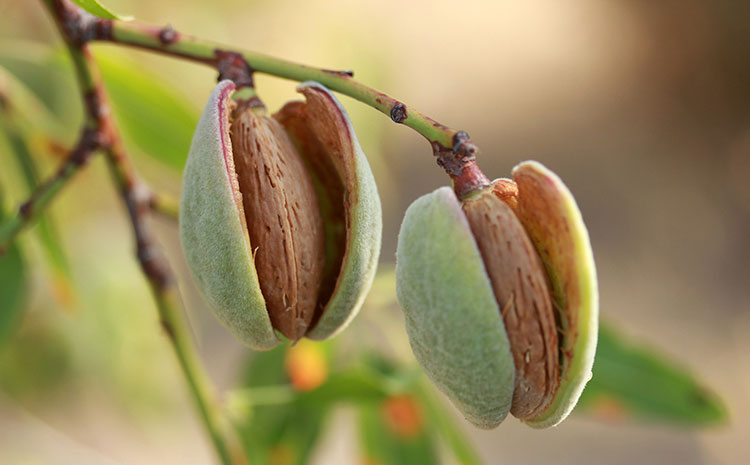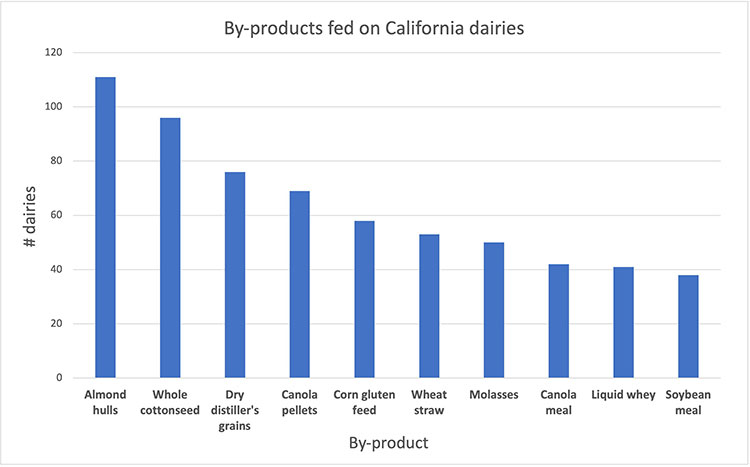
That was evidenced clearly by the 58 unique by-product feeds California dairy producers reported using in a recent survey organized by University of California Cooperative Extension specialists. In that survey, 138 of the 156 responding farms were feeding some by-product in their ration, reported Jennifer Heguy during the Golden State Dairy Management Conference.
The most common by-product feed was one that California certainly has a lot of — almond hulls. The state supplies roughly 80% of the world’s almonds, and much of that production is concentrated in the central part of the state. That’s also where many dairies are and where this survey was conducted.
Almond hulls are a good source of sugar and fiber in the ration, though they are lower in protein, said Ed DePeters, a professor of animal science at the University of California-Davis. During the conference, he shared that farms feed, on average, 5 pounds of almond hulls per day. Large, relatively uniform hulls free of shells and sticks are the goal.
Other top by-product choices identified in the survey included whole cottonseed, dry distillers grains, and canola pellets. The complete top 10 list is highlighted in the graph below.

A value
Farmers were also asked about concerns they run into with feeding by-products. Over 80% cited worries about availability of their ration ingredients. Another top consideration was the quality of product being received.
Still, by-products such as almond hulls can be a nutritious, sustainable feed source for cattle. The sheer variety of by-products used in dairy rations shows the value that dairy provides to other industries.








